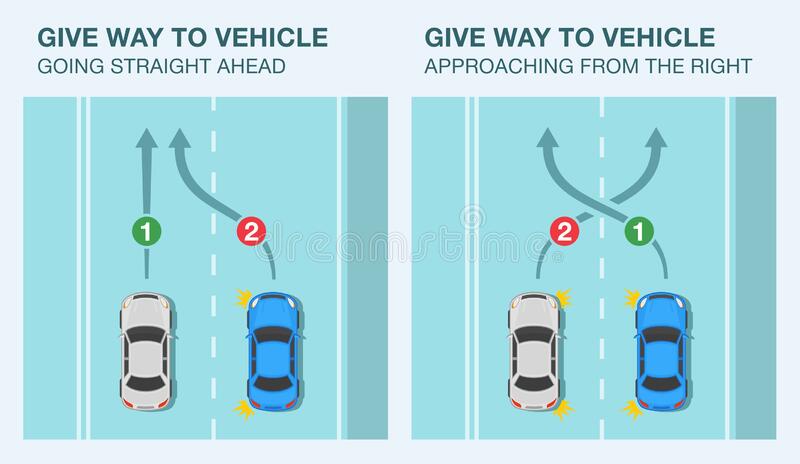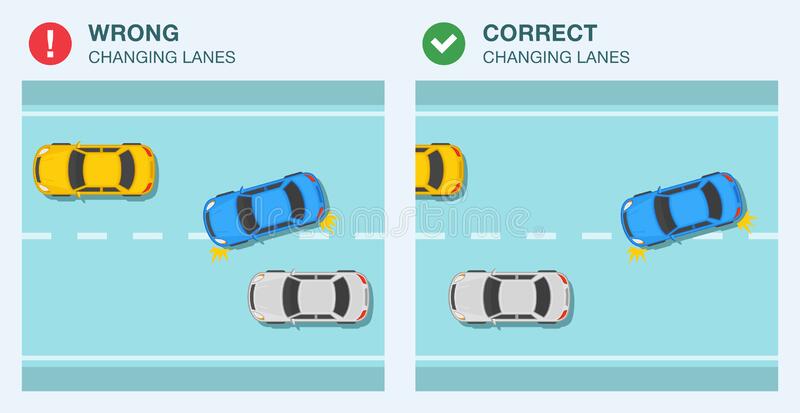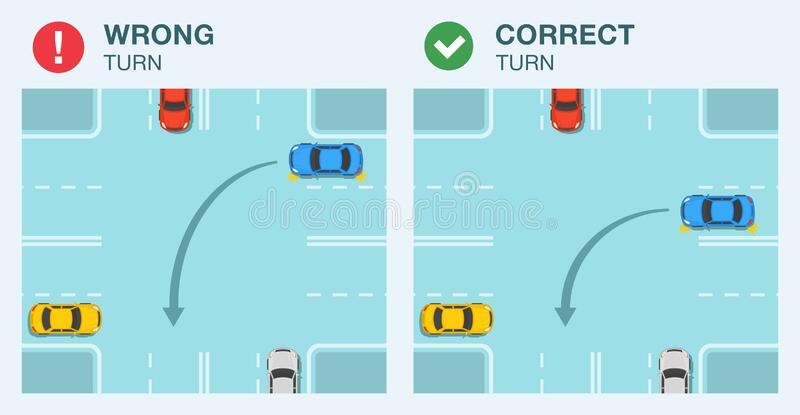Traffic Lanes
Traffic lanes are often referred to by number. The left or “fast” lane is called the “Number 1 Lane.” The lane to the right of the “Number 1 Lane” is called the “Number 2 Lane,” then the “Number 3 Lane,” etc.
Drive in the lane with the smoothest flow of traffic. If you can choose among three lanes, pick the middle lane for the smoothest driving. To drive faster, pass, or turn left, use the left lane. When you choose to drive slowly, enter or exit traffic on the right, turn right, park, or move off the road, use the right lane. If there are only two lanes in your direction, pick the right lane for the smoothest driving. Do not weave in and out of traffic. Stay in one lane as much as possible. Once you start through an intersection, keep going. If you start to make a turn, follow through. Last minute changes may cause collisions. If you miss a turn, continue until you can safely and legally turn around.
Changing Lanes
Changing lanes includes:
- Moving from one lane to another.
- Entering the freeway from an on-ramp.
- Entering the road from a curb or the shoulder.
Before changing lanes, signal, look in all your mirrors, and:
- Check traffic behind and beside you.
- Look over your shoulder in the direction you plan to move to make sure the lane you want is clear.
- Check for vehicles, motorcyclists, and bicycle traffic in your blind spot.
- Be sure there is enough room for your vehicle in the next lane.
Passing Lanes
Before you pass, look ahead for road conditions and traffic that may cause other vehicles to move into your lane. Never drive off the paved or main- traveled portion of the road or on the shoulder to pass. The edge of the main-traveled portion of the road may have a painted white line on the road’s surface. Passing other vehicles at crossroads, railroad crossings, and shopping center entrances is dangerous.
Pass traffic on the left. You may pass on the right only when:
- An open highway is clearly marked for two or more lanes of travel in your direction.
- The driver ahead of you is turning left and you do not drive off the roadway to pass. Never pass on the left if the driver is signaling a left turn.



Cambio de carriles
Cambiar de carril incluye:
- Pasar de un carril a otro.
- Entrando a la autopista desde una rampa de entrada.
- Entrar en la carretera desde un bordillo o el arcén.
Antes de cambiar de carril, haga señales, mire en todos sus espejos y:
- Verifique el tráfico detrás y al lado de usted.
- Mire por encima del hombro en la dirección en la que planea moverse para asegurarse de que el carril que desea esté despejado.
- Compruebe si hay vehículos, motociclistas y tráfico de bicicletas en su punto ciego.
- Asegúrese de que haya suficiente espacio para su vehículo en el carril de al lado.
Carriles de paso
Antes de rebasar, observe las condiciones de la carretera y el tráfico que pueden hacer que otros vehículos se muevan a su carril. Nunca conduzca fuera de la parte pavimentada o de tránsito principal de la carretera o en el arcén para rebasar. El borde de la parte principal del camino puede tener una línea blanca pintada en la superficie del camino. Rebasar a otros vehículos en cruces de caminos, cruces de ferrocarril y entradas de centros comerciales es peligroso.
Pase el tráfico a la izquierda. Puede pasar por la derecha solo cuando:
- Una carretera abierta está claramente marcada para dos o más carriles de circulación en su dirección.
- El conductor delante de usted gira a la izquierda y usted no se sale de la calzada para rebasar. Nunca pase por la izquierda si el conductor está señalando un giro a la izquierda.
